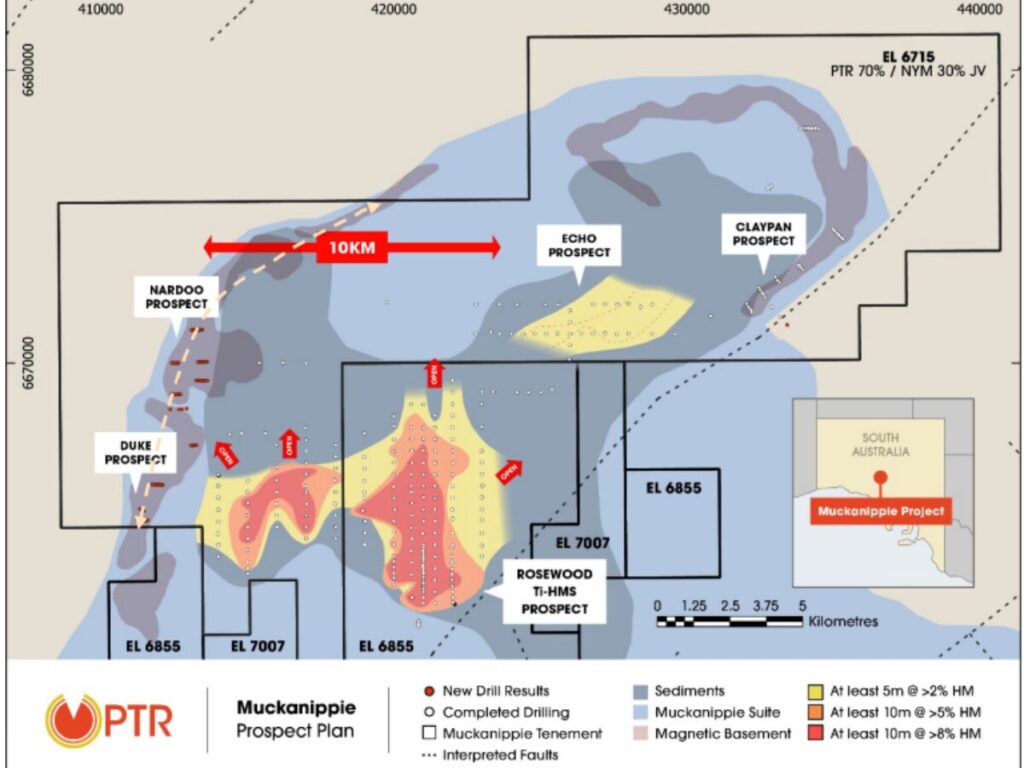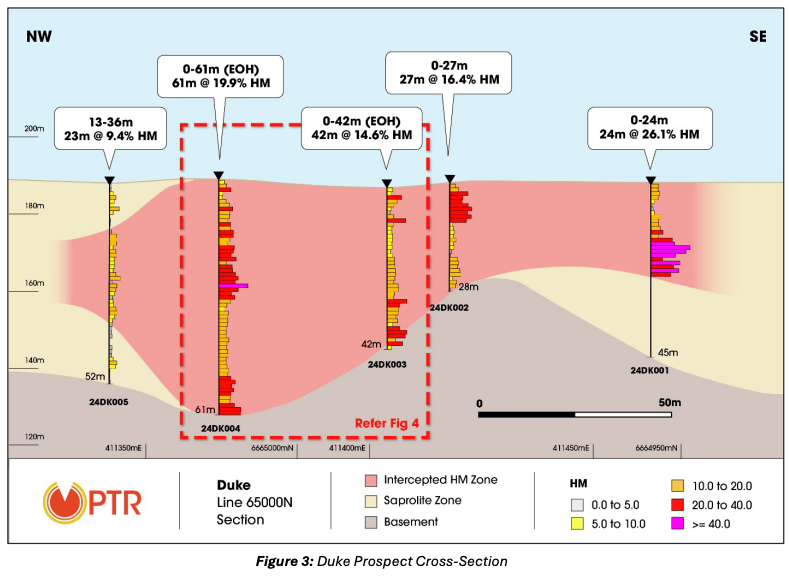PTR ain’t mucking around as it hits high grades at Muckanippie mineral sands discoveries

Drilling is delivering stellar results, with two new discoveries growing the potential of PTR’s Muckanippie project in South Australia. Pic: Getty Images
- Two new heavy minerals discoveries at Muckanippie send PTR Minerals shares higher
- Located on a JV tenement, the Duke and Nardoo prospects have returned high-grade heavy minerals with strong titanium dioxide concentrations
- Adds to Rosewood discovery as major titanium camp emerges
Special Report: Regarded by many onlookers as one of the best mineral sands discoveries in Australia since Iluka’s company-making Jacinth-Ambrosia, PTR Minerals has shown its Muckanippie project will get bigger.
New drill results have delivered high-grade heavy minerals assays from the Duke and Nardoo saprolite targets, two additional sources of titanium feedstock less than 10km from its Rosewood discovery.
Located in South Australia, Rosewood placed PTR Minerals (ASX:PTR) on the map last year, re-rating the stock by close to 160% on a 12 month time horizon.
Nardoo and Duke, which are on a JV tenement held 70-30 with minority partner Narryer Metals (ASX:NYM), have seen 2578m of drilling in 65 aircore holes in the latest program.
And the results are mighty fine. At Duke, a string of hits has improved on the previously released highlight of 61m at 19.7% heavy minerals from surface, including:
- 60m at 39.3% HM from surface incl. 6m at 61.6% from 25m;
- 24m at 26.1% HM from surface;
- 31m at 21.5% HM from surface; and
- 37m at 21.0% HM from surface.
Over at Nardoo, a number of hits have been added to a previous highlight of 44m at 29.4% HM from surface, including:
- 35m at 31.5% HM from 18m;
- 44m at 23.9% HM from 1m;
- 60m at 16.3% HM from surface;
- 36m at 25.7% HM from surface; and
- 30m at 30.4% HM from surface.

Metallurgy on point
One of the critical things here is metallurgy, with initial XRF results giving an insight into the make up of the heavy minerals hits.
Titanium dioxide concentration is a major sticking point and six of seven holes assayed returned results of at least 15m at more than 20% TiO2 content.
QEMSCAN analysis of heavy minerals concentrate showed samples were returning between 73-93% valuable heavy minerals, with a high proportion of altered ilmenite, ranging from 42-70% of the samples.
That’s a type of the mineral known for bearing high quantities of TiO2, used in welding, pigment and as a titanium metal feedstock for aviation and defence materials.
PTR’s bounty looks to be vast, with HM mineralisation open along strike at Duke and Nardoo, and excellent potential to extend mineralisation along a 16km long magnetic anomaly.
Known HM mineralisation covers as much as 40km2 of ground controlled by PTR.
“Following strong exploration and metallurgical results at Rosewood, the exploration success at Duke and Nardoo continues to build on the outstanding potential of the larger Muckanippie HM Project as an emerging camp-style titanium province,” PTR CEO Peter Reid said.
“The Rosewood Titanium Project now extends over 40km2 and includes two extensive high-grade strandlines which remain open. Recent metallurgical testing has yielded strong recoveries (86-95%) and produced a high quality HMC product (91-98% HM).
“The recent discovery of a new sediment-hosted mineralised zone at Echo to the north-east of Rosewood already provides the Company with the potential for multiple large-scale, high-grade HM systems that remain open in multiple directions.”

Expansion potential
Rosewood would remain the key focus for PTR, Reid said.
But Duke and Nardoo represent exciting expansion opportunities, with bench-scale separation testing planned to assess the economics of producing a concentrate using traditional wet separation techniques.
Regardless, PTR sees the potential for multiple economic titanium bearing deposits at Muckanippie, with the at surface nature of the mineralisation showing Duke and Nardoo could be amenable to free-digging mining methods.
“This potential is significantly enhanced with confirmation of the size, thickness and high-grade nature of the saprolite hosted HM mineralisation. In particular, the titanium dominant mineral assemblage has the potential to complement future production at Rosewood,” Reid said.
“The Duke and Nardoo Prospect mineralisation is associated with a prominent magnetic trend that extends approximately 16 kilometres on our tenement area and which we believe to be mineralised along most of its length offering significant potential for the identification of large tonnages.”
Additional drill testing is planned.
Muckanippie represents arguably the most exciting mineral sands discovery in South Australia since Jacinth-Ambrosia in 2004. Built by 2009, JA is now the world’s largest zircon mine.
Sitting to the north of Ceduna, Rosewood, Duke and Nardoo are distinct given their higher proportion of TiO2, a commodity facing emerging supply shortages as legacy sources of natural rutile wind down.
This article does not constitute financial product advice. You should consider obtaining independent advice before making any financial decisions.
Related Topics

UNLOCK INSIGHTS
Discover the untold stories of emerging ASX stocks.
Daily news and expert analysis, it's free to subscribe.
By proceeding, you confirm you understand that we handle personal information in accordance with our Privacy Policy.








